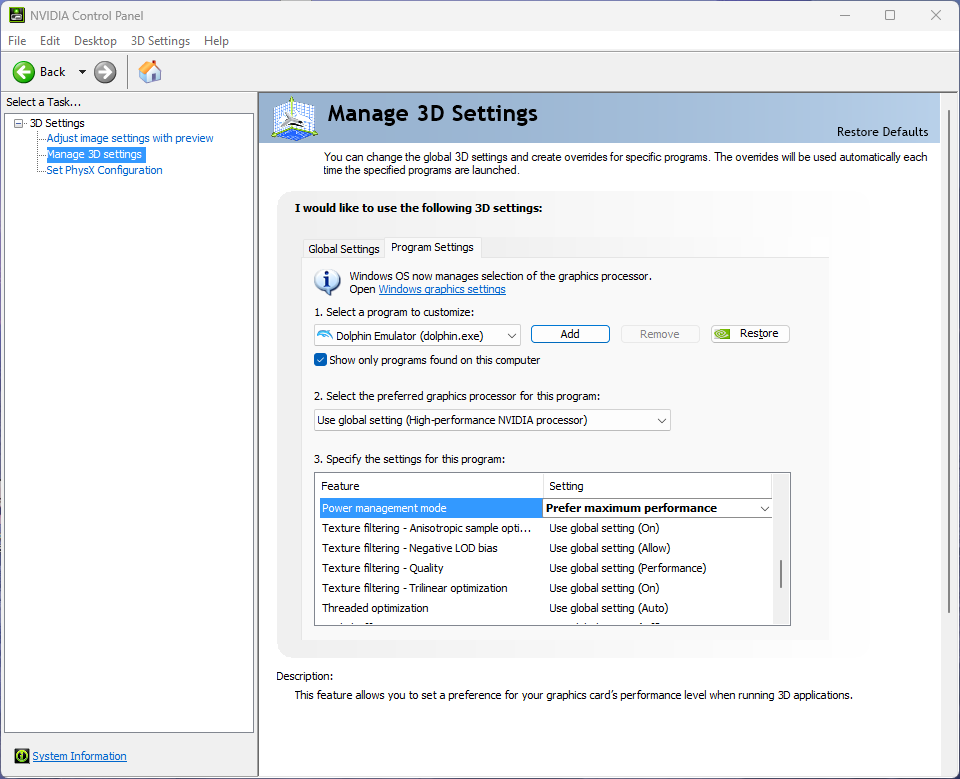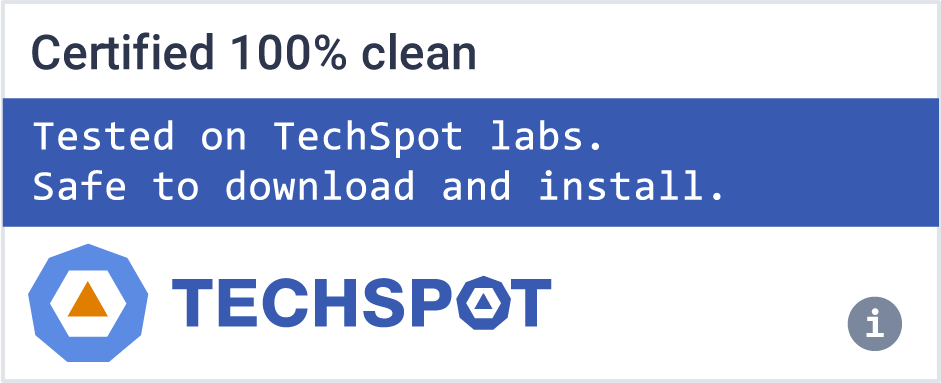Dolphin is an emulator for the Nintendo GameCube and the Nintendo Wii. It allows PC gamers to enjoy games for these two consoles in full HD (1080p) with several enhancements: compatibility with all PC controllers, turbo speed, networked multiplayer, and even more.
Note: The stable versions are years out of date and missing countless features and bug fixes. Beta or development versions are a better choice for almost all users; the stable versions should only be used if you have a specific need for them.
The Windows beta versions require the 64-bit Visual C++ redistributable for Visual Studio 2022 to be installed.
What games can you plan with Dolphin Emulator?
Dolphin lets you enjoy Nintendo GameCube and Wii games on PC. For a complete list of playable games, you can check out the list here.
What kind of CPU do I need to run Dolphin?
You'll need a quad-core CPU or better. With four cores, Dolphin has two cores for the main emulation threads, a third core for other tasks, and another core for the OS and background tasks.
Do I need a powerful GPU to run the Dolphin emulator?
A discrete graphics card that supports DirectX11.1 and OpenGL 4.4 is highly recommended. The more powerful the graphics card, the more pixels and enhancements you can throw at it.
- Nvidia: A GeForce GTX 1060 or better Nvidia GPU will be able to play Dolphin in HD resolutions with Ubershaders well.
- AMD: A Radeon RX 570 or better AMD GPU will perform well in Dolphin with Ubershaders. AMD generally favors D3D over OpenGL.
- Intel: Iris Pro iGPUs will handle Dolphin well in D3D in Windows. Integrated graphics older than HD 4000 are not supported.
How much RAM do I need to run Dolphin?
Dolphin requires at least 2GB of RAM. RAM speed generally has no effect on emulation performance.
Can I use two or more controllers for local multiplayer on Dolphin emulator?
Yes, if you have two or more friends connecting from the same computer, you can give a single computer multiple controllers. You only need to configure the first two ports of the Controller Configuration page.
What operating systems are supported?
Dolphin is a cross-platform emulator that runs on Windows 10 and Windows 11, Linux, macOS (10.15 Catalina and up), and Android (5.0 and above). Dolphin requires 64-bit operating systems to run properly.
What's New
We've got a lot of exciting news and features packed into this Progress Report. On top of the normal emulator development, Dolphin's infrastructure has seen a massive overhaul. While most of the work has gone into optimizing our backend and hardware to meet new demands, users may notice some upgrades to user facing features like the Dolphin Wiki and FifoCI.
Some focus on the infrastructure doesn't mean there was a slowdown in progress for the actual emulator, though! A bevy of new contributors to the project mixed with the efforts of stalwarts has brought together some massive new features no one will want to miss. Headlining this Progress Report is a massive new performance hack called VBI Skip. If you're on a weak device that can't consistently play a game full-speed, VBI Skip is a powerful tool that can help make the game more playable and keep audio crisp and clear. If you're looking for higher performance overall, a ton of Vulkan optimizations and general emulator optimizations have given Dolphin a pretty large performance increase. A new option called Cull Vertices on the CPU can also greatly improve the framerate in many games.
If you're instead looking to enjoy some unique games, the Skylanders games can now be played without needing a physical Portal of Power connected. You can even use your own figurine data to continue where you left off with powerful Skylanders!
We have a lot to get through... but first.
It's that time again - we have to warn users of a rather annoying problem that can decimate Dolphin's performance, particularly in mobile devices. The culprit this time is Nvidia based Optimus laptops - users have been reporting that the discrete NVIDIA graphics card has been giving them a fraction of the performance of Intel's onboard graphics!
We're unsure of what is wrong and haven't been able to determine exactly when it started happening. However, if you find that Dolphin is suddenly running slower than before, you can work-around the issue! Simply add Dolphin to the 3D Settings in the Nvidia Control Panel and set our Power Management setting to "Prefer Maximum Performance." That has been the only way to consistently fix performance.
It's very rare that we merge a rather egregious hack. But when one shows up with such potential to drastically improve playability with a minimal impact on maintenance, it was a bit too much to pass up on. The entire story around how this change came out is rather strange.
The key thing to note is that Sam-Belliveau had a stress-inducing final exam and college applications quickly approaching during all of this. Thankfully for all of us, their only solace for procrastination was messing with Dolphin. One of the things they were working on was improving Dolphin's throttling, which led to them messing with what happens when a frame was presented. They then ended up messing with the timing of Vertical Blank Interrupts (VBIs). This is going to be a huge simplification, but they are essentially interrupts timed to the Vertical Blanking Interval on a CRT television (also abbreviated as VBI, though more commonly as VBLANK). Since the Vertical Blanking Interval is how a CRT understands the start/end of each frame, the GameCube, being designed for analog televisions, uses an interrupt to track these and also uses said interrupt to mark of the start/end of each frame internally.
During this experimentation, Sam-Belliveau's experimented what would happen if Dolphin simply ignored or skipped a Vertical Blanking Interrupt when Dolphin was lagging. While their goal was to improve framepacing, the result they got when testing Wii Sports Resort was something no one expected.



